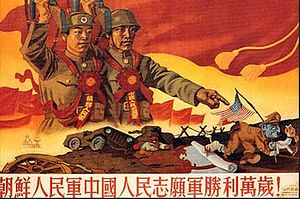Last week’s article was the first in a series about the basic knowledge and beliefs of Chinese People’s Liberation Army (PLA) members based on its publication The Soldier’s Handbook. This week’s installment continues with what the PLA considers its greatest battles.
As the PLA was taking shape as a guerilla force after its official foundation on August 1, 1927, Mao Zedong and Marshal Zhu De formulated a 16 character strategy: “We retreat where the enemy advances, harass where he encamps, attack where he wearies, and pursue where he retreats.” Guerilla warfare concluding with a decisive strike is called the Mushroom Tactic, using “mushroom” as a verb meaning to delay and harass.
The PLA’s defining moment came during the Long March, which they consider to be Dunkirk, the Odyssey, and Battlestar Galactica rolled into one. In 1934, the Jiangxi Soviet, heart of Communist Party power, found itself surrounded by Chiang Kai-shek’s Nationalist forces and on the brink of destruction. The Central Committee and Revolutionary Military Commission therefore ordered the 86,000 troops of the 6th Red Army Group to evacuate to central Hunan to continue guerilla fighting there.
On August 7, 1934, these soldiers escaped Nationalist encirclement to the west but went on to lose more than 30,000 troops in fighting. Then-chairman of the Chinese Soviet Republic Mao Zedong seized on this error to convince the Party Politburo to jettison its original plan and order the army further into Guizhou where the Nationalists were weak. At an expanded meeting at Zunyi in Guizhou in January 1935, the Politburo established Mao’s leadership over the Communist Party and the Red Army, positions of power he would hold until his death 41 years later.
After many hardships, the Long Marchers reached the revolutionary base at Yan’an in Shaanxi Province beginning in late 1935, preserving the lives of 30,000 to continue their struggle.
The PLA’s years of resistance to Japan and civil war with the Nationalists allowed the Party in 1949 to establish the People’s Republic of China. Just one year later over 130,000 PLA troops, under the guise of being a volunteer force, crossed the Yalu River on October 19 to carry out what they called the War to Resist America and Support North Korea. Their goal was to stop the “invading” UN Command, headed by “American Imperialists,” from occupying all of North Korea. They were successful, but at great cost.
After Korea, the PLA took part in numerous campaigns, including the 1962 China-India Border Defense War (successful), 1974 Defensive Counterattack Operation to drive South Vietnam off the Paracels (successful), and 1979 Defensive Counterattack on Vietnam (less successful). These operations purported to show that China’s national defense policy is purely defensive in nature, although China’s neighbors have other opinions and continue to be wary of China’s muscular actions.
Some of the PLA campaigns most critical to preserving Party rule in China are too sensitive for the Handbook to mention: restoring public order during Cultural Revolution in 1968, forcing dissatisfied Chinese citizens out of Tiananmen Square after Zhou Enlai’s death in 1976, and again during the massive 1989 riots.
During the Great Leap famine of 1959-1961, the PLA avoided the cruel starvation that awaited so many Chinese people. Naturally the Party had to feed its gun to maintain political power. But it was also a PLA-led coup that brought an end to the rule of the Cultural Revolution clique after Mao’s death in 1976, subsequently naming Deng Xiaoping as paramount leader and ushering in his Reform and Opening.
Thus the PLA has been creator, destroyer, hero, villain, and sometime savior of the Chinese nation.

































